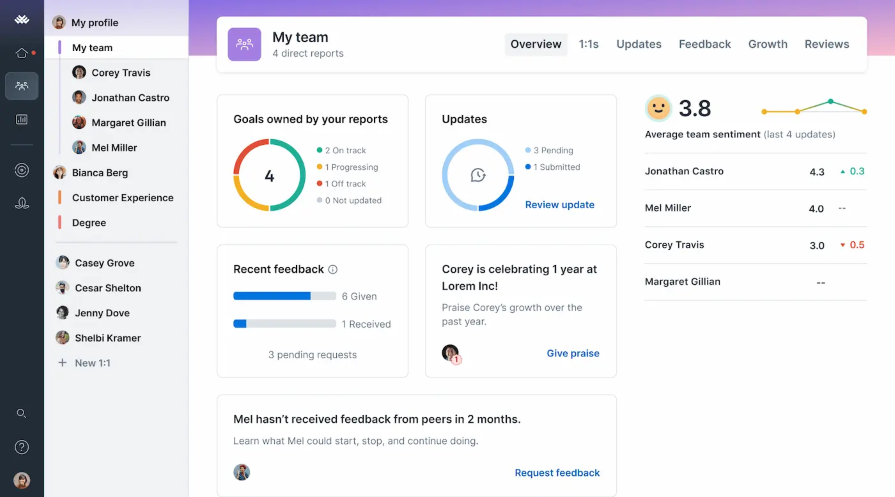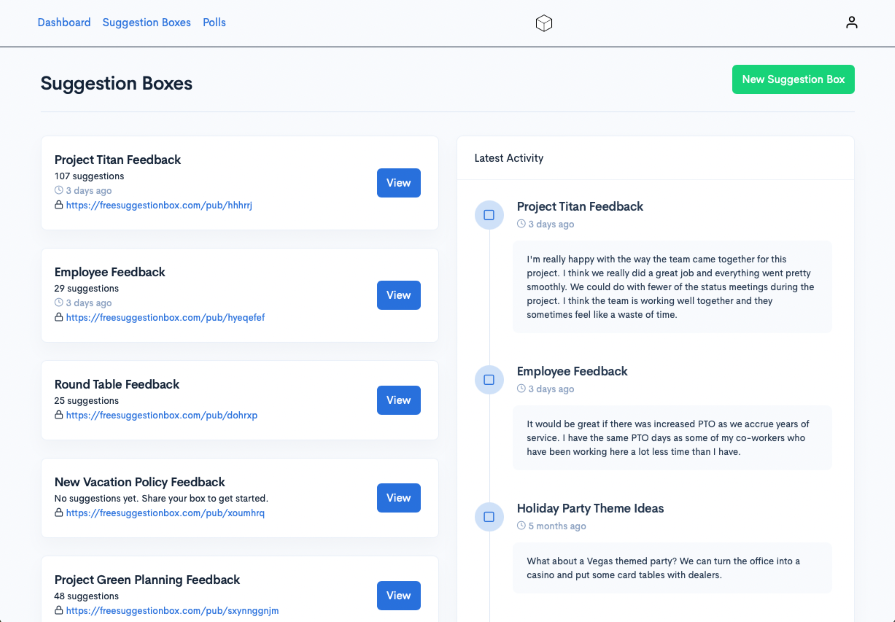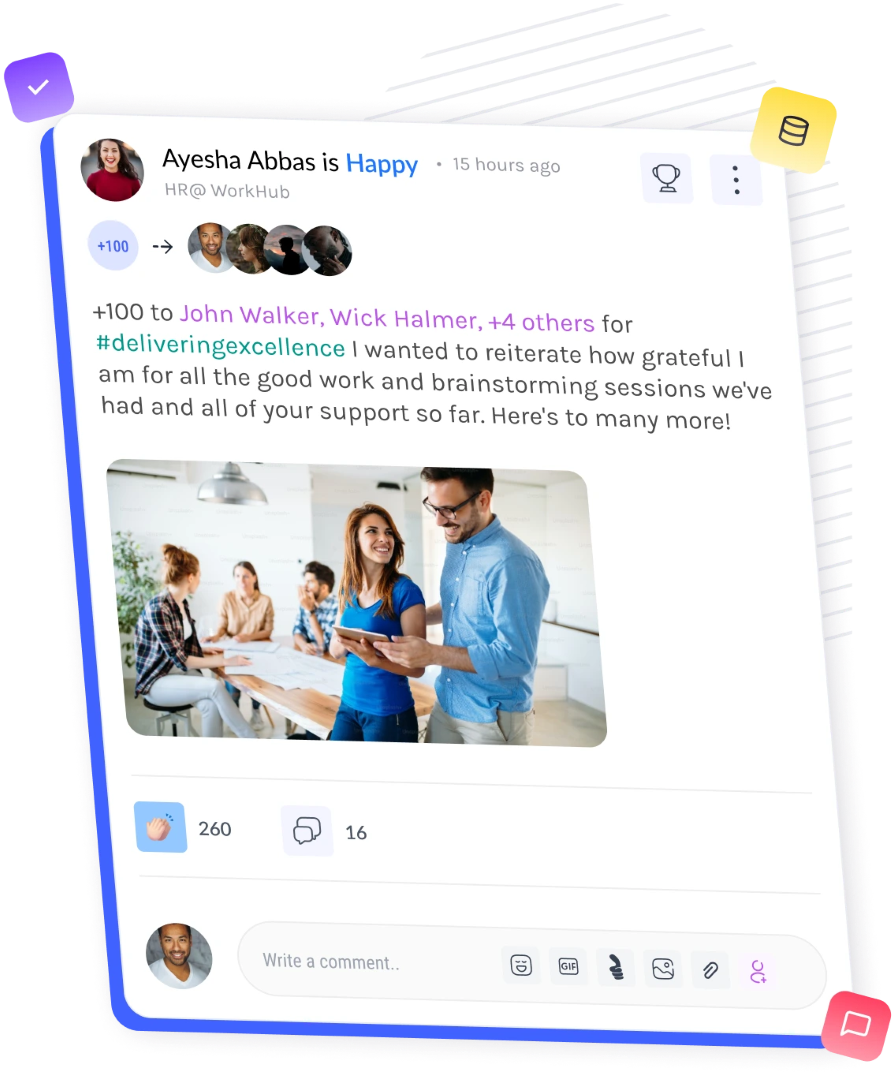It can be hard to navigate the career path of a UX designer without a manager or mentor who has your best interests in mind, particularly if you find yourself in a new leadership position. All of a sudden, you’ll be the primary facilitator of most team meetings.

Outside of the daily standups, weekly design critiques, and various other meetings that your team might have, one-on-one meetings are an opportunity to show your design team that you’re invested in their career growth and want to see them succeed. It’s not a time for a status update on your team member’s work, but a chance to connect as humans and foster a positive environment that empowers them to succeed.
One-on-ones are also a chance for you to flex your mentorship abilities and help pave a path for others by sharing your experiences and advice. Let’s talk about the purpose of a one-on-one meeting, what makes a successful one, and strategies to plan and run one effectively. We’ll also walk through a sample agenda to use as a foundation for your one-on-one meetings with your design team.
A one-on-one meeting is primarily a dedicated forum between a manager and an individual contributor to communicate career goals, challenges, concerns, and feedback. It should be a safe and confidential space, built on trust and transparency, which can take time to establish.
As a design manager, one-on-ones allow you to directly mentor other designers by providing them guidance with their career aspirations, feedback on their progress, and support with their challenges. Each team member has different skill sets, career goals, personal goals, and communication styles. They come from diverse experiences and backgrounds and have other hopes and fears. Even their personality type can contribute to how you approach mentoring a team member.
Thus, not all one-on-one meetings are the same, but they should share the intent to strengthen the relationship between manager and team member. It’s also an opportunity to mentor your team to succeed in their goals. These conversations should be met with empathy as you seek to understand who your team members are as people. Learn about their dreams and struggles, and make their voices feel heard.
The deeper the connection you form with your team members, the more trust you build in the team. The result cascades into their workflow, empowering them with the confidence to continue to improve each day and make mistakes without fearing the consequences. Their performance and growth ultimately will positively impact the company.
From my experience working on a design team, one-on-one meetings are more personal than any other meeting. To set yourself up for success with your one-on-ones, approach them as friendly conversations between two people instead of just another corporate meeting. It can be easy for us to get caught up in project work and deadlines, and forget to take a breather.
Ask your team members how they are feeling to get a pulse on team morale. This is a starting point for creating a safe and open environment for them to feel comfortable sharing their thoughts and concerns with you.
Many companies use employee engagement tools like Lattice to keep track of their team members’ sentiments, goal progression, and feedback. Lead with empathy and good intentions. Follow through with active listening:

Just as every team member has different preferences, collaborate to determine a cadence for your one-on-ones that works for them. Some may want more frequent touchpoints for regular feedback and discussion, while others are more hands-off and require less guidance.
Align on their preferred feedback method and communication style so that they get enough support from you without feeling micromanaged. Be helpful without being overbearing.
Before meeting one-on-one with your team members, plan ahead to get an idea of topics to discuss or questions to ask to understand their particular needs or goals. Consider reaching out to stakeholders that your team members work with to gather feedback on what it’s like working with them.
Take it a step further and encourage your team to foster a culture of feedback by regularly providing and requesting feedback after each completed project. This can potentially give you some data points on their strengths and weaknesses, or identify conflicts that may be of concern. You can use a tool like Free Suggestion Box to request anonymous feedback from specific team members on a project:

During your one-on-one meeting, make it clear that you are there for your team member and this time is for their benefit. Be curious and lead the conversation with questions. Let your team members open up about what’s been on their minds, whether it’s a project they’re working on, a stakeholder they’re working with, or a personal issue. Take the time to understand what matters to your reports and dig deeper into those conversations.
Once you have a sense of how things are going with your team member, work with them to define their career goals, both short-term and long-term. This may involve upskilling, taking on more responsibility, or moving up the career ladder. Whatever it may be, discuss what they hope to achieve and how they plan to get there. This conversation will involve defining what success looks like, perhaps by measuring their impact on the business or completing a certain project.
Understand the types of challenges they’re currently facing and what they can do to resolve them. Let them know that you are there to support them such as by helping get them on the right projects or funding a skills workshop to expand their skill set. Guide them to a solution but also give them autonomy to conclude their thinking.
A great leader doesn’t tell others what to do but helps them realize their potential and guides them toward achieving it. Not only is it rewarding for them to progress in their career, but as a mentor, there’s no better feeling than investing in your team’s development.
Each one-on-one should serve as a checkpoint for your team member’s progress toward their goals. Reflect with them on what they have done since the previous meeting. Talk about what’s been working and any challenges they might be facing. Career goals are not “set it and forget it.” Instead, they require regular check-ins to keep team members motivated and on track, ensuring that you support them at every step.
Always end a one-on-one meeting with some action items for them to take away. This will provide them with a direction to follow to achieve their goals. It also makes it an ongoing conversation so that your one-on-ones feel valuable to both of you.
One-on-one meetings should also celebrate your team members’ achievements. Talk about their wins and reflect on why it was a success. Recognize their successes by broadcasting them across the team. This makes them feel empowered and appreciated and can also help them gain visibility by senior leadership.
Companies often use employee recognition tools like BRAVO to encourage team members to socially recognize each other and incentivize this behavior with rewards:

It also motivates the rest of the team to see their peers win and boosts overall team morale. By identifying their strengths and interests, you can assign your team members to take on similar projects in the future that excite them or will help them reach their goals. No matter how small the success, it pays to foster a culture of positivity and motivation within your design team. If people feel appreciated and rewarded for their work, it will show in their outcomes.
Although no one-on-one meeting follows the same structure, here’s a general guideline of how you can approach one. It’s important to always have an agenda for your one-on-one meetings so that you can prepare for the conversation in advance.
As you continue to meet with each team member, you will get a better idea of topics that they would like to discuss moving forward. If there are no agenda items to discuss, you can always cancel the one-on-one to give some time back to your team. This sample agenda is based on a 30-minute meeting.
Start the meeting on a positive note by casually kicking things off. Ask them how they’ve been feeling lately and get to know them on a more personal level if they are open to it. Even just talking about how their weekend went is a great way to understand their interests and personality a bit more. We often forget that outside of work, we are all just people trying to enjoy life. Bringing a human side back into the corporate world can help build rapport and trust moving forward.
Give a quick reminder about where the last career goals conversation left off. If there were action items from the previous meeting, talk about how they are progressing. Learn about their challenges and provide constructive feedback to help them figure things out. Lead this conversation with empathy as these topics can be stressful depending on their current struggles.
Conclude the conversation by setting action items for your team members to focus on. This may be the same action week-to-week if their goals are longer-term. And if they have achieved their goal, then talk about what else they aspire to achieve. Goal setting is a constant cycle and gives people a sense of commitment to something. The feeling of fulfillment and reward once the goal is reached is not only great for personal development but also for achieving better business outcomes.
Take the last few minutes to discuss any other conversation topics, such as team events or completing HR activities, such as employee surveys or performance reviews. Ask them if there’s anything they need from you or would like to discuss in the next meeting so that you can prepare for the following meeting’s agenda.
A leader’s role in a design team is vital to the company’s success and a big contributor to that is one-on-one meetings. While most meetings that occur serve business needs, the one-on-one is a dedicated time for team members to have their voices heard. It’s a space built on trust and support, where leaders can mentor and guide their team members to success through goal setting, upskilling, resource management, and other methods.
Investing in your team’s career progression is just as important as the projects that they work on. A motivated, fulfilled team will perform with increased productivity and better confidence. The conversations that are had within a one-on-one meeting are the seeds of building that confidence. That’s why it’s so important to make time for each other because a strong design team leads to a strong business.
Header image source: IconScout
LogRocket's Galileo AI watches sessions and understands user feedback for you, automating the most time-intensive parts of your job and giving you more time to focus on great design.
See how design choices, interactions, and issues affect your users — get a demo of LogRocket today.

Small actions can have large consequences in complex systems. Here’s how UX designers can manage dependencies so users feel informed and in control rather than blocked or blindsided.

This article examines when hero sections are necessary in digital products, when they create friction, and how to evaluate them using UX goals, primary actions, user flow impact, and real-world alternatives.

AI speeds up tasks like research synthesis, ideation, and first-draft wireframes, but it can’t replace clarity, taste, or decision-making. Here’s a grounded look at what AI actually does well in UX right now.

Discover how to craft UX-friendly hero sections with examples, design tips, and strategies that drive engagement and conversion.